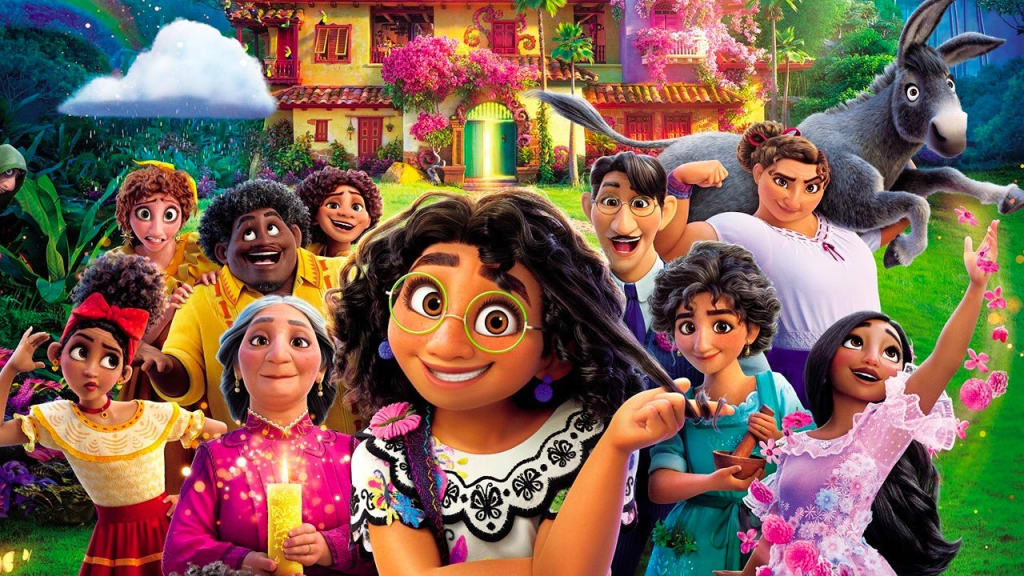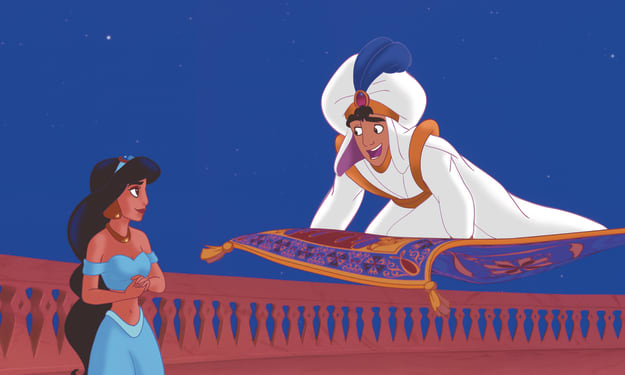From The Uncanny Valley to Perfect Princesses: A History of Human Characters in Computer Animation
From the uncanny valley to perfect princesses

Computer animation has a much longer history than some may realise. At first used to easily enhance and create backgrounds in 2-D traditionally animated films, it was later used to craft specific sequences, such as the stampede scene in The Lion King. Eventually, the technology became advanced enough to render full-length feature films, and nowadays, computer animation is the primary method used in the production of major theatrical animated films.
However, while the first full-length computer animated film hit theatres in 1995, it was not until over a decade later that humans were regularly the central characters in these films. There was a long, complicated road for film studios to walk, as they searched for the right balance between what technology was capable of, and when the technology did catch up, which designs would actually work.
Here's a quick look into the history of human characters in computer animated films.
Humans in early computer-animated feature films
Pixar, then owned by Steve Jobs, decided to begin work on what would become the first fully computer animated film in the early 90s, with financial support from Walt Disney Studios. It was decided that the film would use toys as central characters, as while the technology available to them at the time made it possible to render somewhat realistic toys, they were not able to animate realistic people.
Toy Story was released in 1995, and became an instant hit. The film focused on the story of a toy cowboy, Woody, and his new rival, a fancy toy space ranger by the name of Buzz Lightyear. The human characters in the film, such as Buzz and Woody's owner, Andy, Andy's baby sister Molly, and neighbour Sid the Toy Destroyer, are supporting players. The animation of the human characters is not as smooth, and much less detailed when compared with the work on the toys. They also had a slight uncanny valley feel for some viewers
This was improved upon in the sequel, Toy Story 2, but the animation on the humans is still clearly inferior to that of the toys. Pixar's other early films, such as A Bug's Life and Monsters, Inc., also focused primarily on non-human characters, apart from Boo, a small child who wanders into the Monster world. Young children were considered easier to animate than adults, as it was deemed more important that they look cute than that they be realistic.
A Fairytale Attempt
While Pixar were the pioneers of early computer animated feature films, another studio, Dreamworks, who first used humans as central characters, with leading lady Princess Fiona, and villain Lord Farquaad in fairytale-parody Shrek. While Farquaad was highly stylised in his character design, Fiona was the first notable attempt at creating a truly realistic human character with computer animation. The most difficult aspects of creating Fiona were the texture of her hair, and the flow of her dress material as she moved. Shrek also used an early version of the technology that would become motion capture, building aspects of voice actors' facial features into the animated character models.
Shrek was released to great acclaim in May 2001. As well as becoming a popculture icon, the film is also remembered as technologically groundbreaking.
The rise and fall of photo-realism
With technology finally advancing to a point where such a thing was possible, many animation studios fell in love with the idea of creating photo-realistic human characters. The first attempt at a film starring such characters came in July 2001, with the release of Final Fantasy: The Spirits Within, produced by Square Pictures, a subsidiary of the video game developers then known as Squaresoft. The film focused on Dr. Aki Ross, a Scientist attempting to free a post apocalyptic Earth from the scourge of alien creatures known as the Phantoms. It was the first film to make extensive use of motion-capture technology, and it took a team of two hundred animators working with nine-hundred and sixty high powered processors four years to complete work on the film.
Square Pictures had extremely high hopes for The Spirits Within, and planned to make Aki Ross the world's first photo-realistic computer animated actress, and wanted to use her in future films. Unfortunately, although the film was praised for the realistic appearance of the characters, reviews were mixed, with the film becoming a huge box office bomb. It killed Square Pictures, and forced Squaresoft to accept a merger with Enix to keep the company alive.
Despite the failure of Final Fantasy: The Spirits Within, other film studios jumped on motion-capture as a method for creating photo-realistic human characters. However, unlike The Spirits Within, which used motion-captured footage as a reference around which they built their own character model, films such as The Polar Express (2004), and Beowulf (2007), used motion-capture footage of actors like Tom Hanks and Angelina Jolie to create full digital avatars to be used within the films.
Nowadays, The Polar Express is considered a Christmas classic, and was well reviewed at the time of it's release. The only issue some viewers had is that the photo-realistic characters gave the film an uncanny valley feel. They were too realistic, and as a result, audiences struggled to connect with them.
A New Visual Style
When it became clear that the Uncanny Valley phenomenon was a genuine issue, studios moved away from the quest for realism and instead focused on each creating their own unique visual style. Of the major animation studios at the time, Pixar was the first to attempt this, with The Incredibles, their first film focusing on a primarily human cast, released in 2004. For Pixar, this was easy. They already had a unique visual style to build on.
For animation giant Disney, the process proved longer, for one slightly odd reason: their first planned fully computer animated film was Tangled, based on the classic fairytale of Rapunzel, and they needed an entirely new program to properly animate the titular character's hair. Once the hair issue was dealt with and Disney knew they could actually make the film, they put more work into visuals. Instead of making the characters realistic, they aimed to make them loveable. The studio developed a style reminiscent of classic Disney traditional animation, and it is a style they have continued to use in the films that followed Tangled, such as Frozen, Moana, and most recently, Encanto.
Technology is advancing constantly, and their is no telling what the future holds for animated humans. But for now, most studios had found the right balance between what technology can do, and what actually works for the characters they create.
++++++++++++++++++++++++++++++
About the Creator
Kristy Anderson
Passionate About all things Entertainment!
Enjoyed the story? Support the Creator.
Subscribe for free to receive all their stories in your feed. You could also pledge your support or give them a one-off tip, letting them know you appreciate their work.






Comments
There are no comments for this story
Be the first to respond and start the conversation.